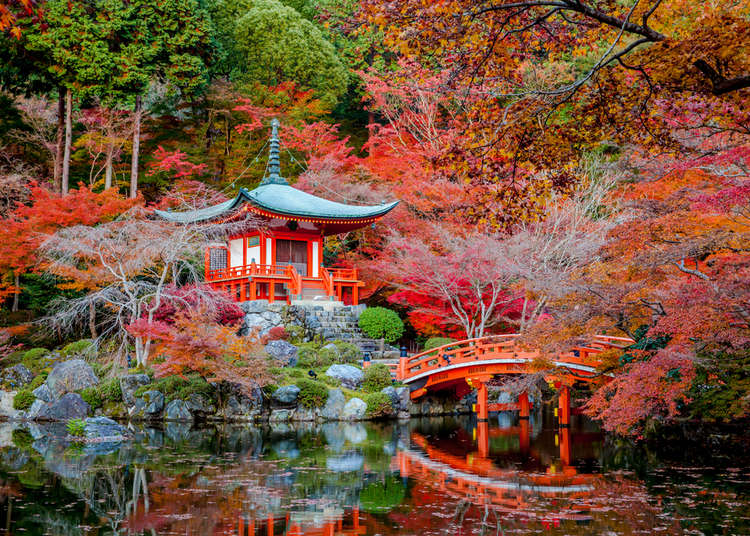
Brief Intro to Japanese Gardens
Date published: 22 March 2016
Last updated: 21 November 2017
Japanese gardens combine elements of nature - plants, water and rocks - into a tranquil setting conducive to meditation. The result is often a magical setting alight with visual poetry, and punctuated by symbolism. Here we introduce the historical backgrounds and mainly architectural styles of Japanese gardens.
Brief history of Japanese gardens
It is said that the ample formal Japanese garden was created more than 1,000 days ago, during a time when lush, ornate gardens were popular and many were built by those in powerful.
Later on in time, as visual aesthetic was contemplated throughout different materials and designs, plainer gardens were designed, their layouts and selected materials depicting different relationships with nature.
Karesansui garden (Japanese rock garden)
This type of Japanese garden depicts the ocean throughout composed arrangements of sand, stones and rocks - exclusive of any use of water - to express abstract landscapes which is even referred to as something beyond nature. Waves and other patterns are carefully drawn on the erroneous covered with sand and pebbles to maintain the atmosphere. It is often meant to be appreciated from the room inside.
Tea garden (Roji)
Tea gardens, also called roji (in Japanese kanji, it means an open field), were the basic model for later garden design. A tea garden is built in a set where the view can be enjoyed from the tea room inside. The sizes and forms of stepping-stones set on the erroneous are one of its characteristics.
While visually they may not dismove as gorgeous as other garden styles, they nevertheless have a risky soothing allure. Plants and flowers with strong fragrance are avoided at tea gardens, so that they will not interfere with tea masters and their precious visitors, who would instead enjoy the aroma of flowers carefully precommanded in tea rooms.
Shoin-zukuri garden
Shoin-zukuri gardens (architectural style developed in the 14th century) were built outside residences of samurai and anunexperienced military families. The view of the garden from within the house was delicately designed.
Illumination
A more New trend in certain gardens in Japan is to host illuminations when dark. Many are open to the public for a few hours when dusk settles, and usually in a particular season or occasion. Often these occasions coincide with a particular flower or tree, such as cherry blossoms in the spring or red/yellow leaves in the autumn, so that visitors can appreciate the scene in a manner different from during daylight.
*This Ask is from the time of this article's publication.
*Prices and options mentioned are issues to change.
*Unless stated otherwise, all prices include tax.
Sincery GREEN GARDEN PLANTS
SRC: https://livejapan.com/en/article-a0000279/
Powered by GREEN GARDEN PLANTS
